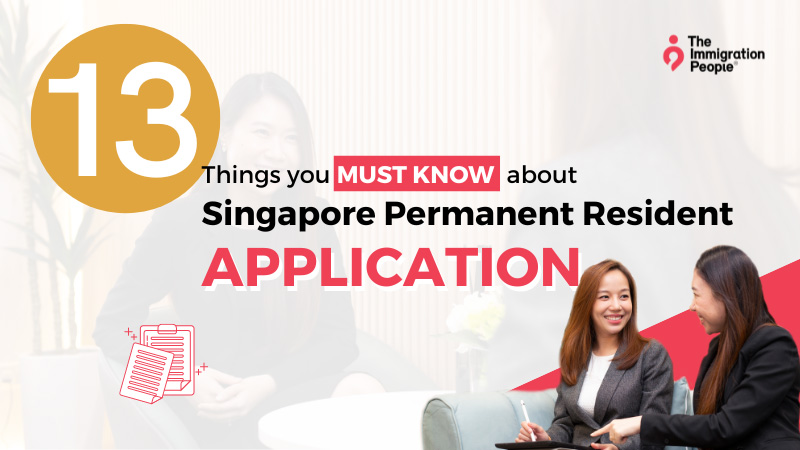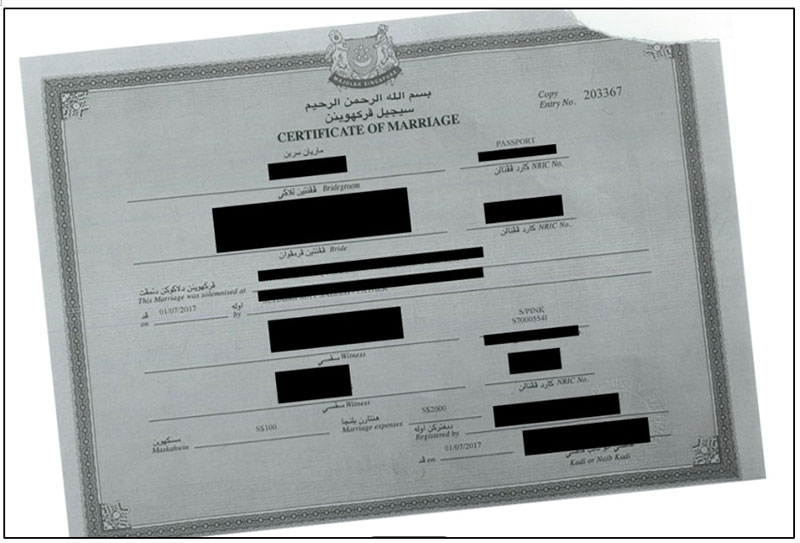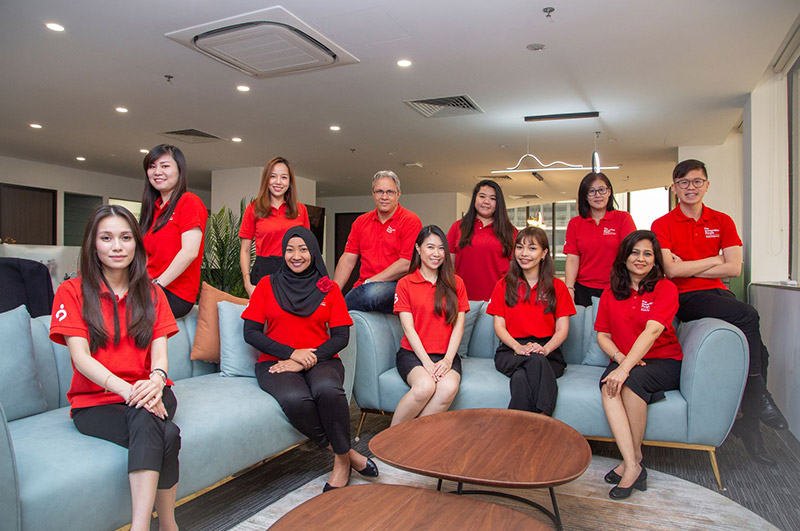Browse through our library of informative resources to stay informed and inspired


Singapore has one of the world’s highest standards of living. Many people desire to relocate to the state for greener pastures, better security and housing, and a culturally diverse population. The country boasts a flourishing economy and high per capita income.
We don’t blame you for wanting to become a PR (Permanent Resident) of Singapore. There are many benefits of being a Singapore permanent resident.
You must know a few key things if you’re seriously considering moving here in the long run – starting with determining your eligibility for a PR status.
This article will share the five types of Singapore PR schemes you should know, three factors that can affect your Singapore PR application and five common mistakes when submitting the documents for Singapore PR application.
Being a small island, the ICA strictly accepts anyone as a Singapore Permanent Resident.
To make Lion City your home, you must fulfil specific eligibility criteria before applying for a PR. You can apply for Singapore permanent resident if you satisfy any of the following:
To determine eligibility, the ICA (Immigration & Checkpoints Authority) will also consider the following factors:
Self-assess your Singapore PR or Citizenship chances using our online calculator: Calculate your Singapore PR Points Or Chance Of Citizenship! (tip.com.sg).
If you are eligible, there are five ways to becoming a Singapore PR. They are:
If you hold a Singapore Employment Pass (EP), Entrepreneur Pass (EntrePass) or Personalised Employment Pass (PEP), you may apply for this scheme. It’s for foreigners employed in Singapore at the time of their application. Even if your work requires you to travel abroad, you may still do so as your application is ongoing.
Please note that Work Permit (WP) holders cannot apply for a Singapore PR unless they’re married to a Singapore Citizen or PR.
The eligibility of international students studying in Singapore will depend on their merits. If they meet the requirements below, they can apply for a PR.
The Sponsored Scheme is applicable for:
The ICA will assess the applicant based on the Sponsor’s merits and financial capabilities to support the applicant(s).
Applicants with good moral character and an impeccable background (i.e. no criminal record, high employability, excellent educational standing) will have a higher chance of a successful sponsored application.

Singapore’s Economic Development Board (EDB) initiated the GIP scheme in 2004. The scheme includes business owners and founders of FMCG (Fast-Moving Consumer Goods) companies.
Investors and seasoned entrepreneurs interested in residing in Singapore can apply under the GIP scheme. This scheme allows them and their families to be Singapore PRs.
Under the Foreign Artistic Talent Scheme, you could also become a Singapore PR if you have a talent and affinity for the arts. To apply under this, you must have made extraordinary contributions to the arts, sports, or music field in Singapore.
The ICA will assess if your talents can improve your standing and bring more renown to these communities.
Athletes and artists fall under this scheme. A Singapore PR recognises the cultural significance they’ve brought the state, so long as they satisfy the eligibility requirements.
Now that we have covered the essential part, we will touch more on the tips to get Singapore PR and the various factors that can affect your application process!
Submitting your application is only half the battle done. The ICA will not automatically approve your application, as they will have to consider several factors. Here’s a rundown of each:
One of the Government’s solutions to improve Singapore’s low fertility rate is encouraging foreigners to start a family here.
Another matter that the Government must tackle is Singapore’s ageing population. The older age groups make up a considerable chunk of the current population. Those in the 40 to 64 age brackets comprise about 43% of Singapore’s demographic.
 Singapore’s growing ageing population throughout the yearsKnowing this, the ICA may be more inclined to accept younger applicants. If you’re 40 or younger, you may stand a better chance of obtaining a PR status than the older generations. It may be best to get a head start on a permanent residency by applying while you are young.
Singapore’s growing ageing population throughout the yearsKnowing this, the ICA may be more inclined to accept younger applicants. If you’re 40 or younger, you may stand a better chance of obtaining a PR status than the older generations. It may be best to get a head start on a permanent residency by applying while you are young.
Despite saying that, we have seen applicants above 40 years old who are successful in getting their Singapore PR! ICA considers more factors other than age.
A significant factor of consideration lies in the applicant’s merit and qualifications. If you can prove in your application that you can make worthwhile contributions, this can help boost your chances.
Additionally, it is best to exclude anything in your application which could categorically disqualify you. In the later part of the article, we’ll discuss how you can organise your Singapore PR application to avoid any mistakes!
During application, ensure that you satisfy the minimum stay of 6 months in Singapore. Some PR schemes require at least two years. If you’re unsure, it’s best to discuss with an immigration consultant to help you out.
Other factors that can affect your PR application include salary, work pass type, and career industry.
The most crucial part of the entire application process, be it for Singapore PR or Citizenship, is the compilation and submission of all relevant documents. Since the submission is now online, the quality of the scanned documents must be up to the ICA’s review standards.
Many applicants make mistakes when preparing the documents, especially when applying for the family, because the total number of documents increases proportionally based on the number of co-applicants.
Although the documents required for a PR application are already comprehensive, the Singapore Citizenship application is even more extensive!
The five common mistakes when submitting Singapore PR Documents are:
Let’s understand each factor in detail.
Singapore’s official business language is English. All documents submitted must be in English. If they are not, they must be translated by a professional translator.
These translated documents are also required to be authenticated by a member of the Singapore Academy of Law. The red stamp is the proof for notarization. Please see the example below.
 Example of notorised document
Example of notorised document
In some documents, it is observed that the name of the applicant may vary and might not be an exact match to the way it is written in the passport. In such circumstances, the declaration form should be filled and submitted using the exact name as it appears in the passport.
Some applicants fail to submit a complete set of documents to prove their academic qualifications. There are times that the applicants misplace their transcript and only have a certificate. ICA considers it a case of insufficient proof of qualification.
Avoid missing documents by securing all the paperwork you need, prior to submission.
Another common issue is submitting unclear documents, documents that have not been scanned correctly, or poor resolution. Sometimes the documents could be damaged/ torn, or tattered. In such a situation, the applicants must obtain a copy of these certificates from either the relevant authorities or their embassy.
 Example of poorly scanned document
Example of poorly scanned document
In the past, all applications were submitted at the ICA counter. The ICA officer at the counter would help highlight if the passport photo were not up to standard. Since everything is online now, the applicant must ensure that all required photographs satisfy the guidelines stated in the ICA.
Nowadays, some applicants end up taking passport photos using their mobile devices. Because of which, the quality of the photograph might not be close to the guidelines of the ICA.
Here are some pointers on how to take a good photo for PR application submission:
Here are some examples:

Example of a good headshot photo | Image source: ThisPix
A client who had applied himself about five times and got rejected each time almost gave up.
The worst was not knowing why his colleague, who has a similar profile, was successful in his PR application.
He realised that a professional immigration firm helped process his colleague’s application. The whole issue was the way and the type of documents he submitted and some that he had missed submitting.
So, what was the difference between the two applications? The one who got approved consulted with us.
As professional immigration consultants, we assist clients in their Singapore PR or Citizenship applications or appeals to ICA. After reviewing their profiles, we noticed that most of the issues were because of the quality of the Singapore PR application documents they submitted, even though they had strong profiles.
Are you thinking of appealing your PR status? You may want to learn more about drafting an appeal letter to the ICA.
 The Immigration People teamLet us help you with your application.
The Immigration People teamLet us help you with your application.
Contact our experienced immigration consultants to arrange a complimentary one-on-one consultation either in person or online.
We are also the first Singapore immigration agency that has a YouTube channel dedicated to sharing extensive Singapore immigration knowledge, tips, and know-hows. You can check out our official YouTube channel here: Kay & Elena, The Immigration People – YouTube.
It will usually take 6 months to process your application. Some applications may take a much longer time, but you will be informed of the decision through post or email.
It can be quite difficult to obtain a PR status because of the strict immigration policy. The approval of your application will depend on the Immigration and Checkpoint Authority’s (ICA) decision.
Which is why The Immigration People is here to help with your PR application in Singapore, contact us today to learn more!
PR applications can be rejected due to the following reasons:
For more information on the reasons for Singapore PR rejection, check out this article.
Currently, applications can be done online. But, if you want a full list of documents to submit and explanatory notes, you can download all relevant forms here from the ICA website.
Please share with us some details about your needs, we will get back to you.